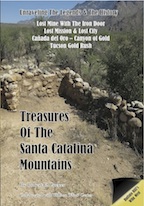|
Entertainment Magazine: Tucson Rodeo: Museum The Tucson Rodeo Parade CommitteeFor 93 years the Tucson Rodeo Parade has kicked off the annual La Fiesta de los Vaqueros celebration. The Tucson Rodeo has grown from a local event meant to increase tourism and fund a local polo club to one of the top rodeos on the professional circuit. The first Tucson Rodeo Parade in 1925 was established to advertise and draw spectators to the rodeo to be held immediately following the parade. It featured two military bands, mounted cowboys, cowgirls, and Native Americans, mounted police and the University of Arizona polo team. All cowboys participating in the rodeo were required to participate. In October of each year a group of local volunteers embark on planning each segment of the parade and refurbishing wagons and buggies used in the Tucson Rodeo Parade. The Tucson Rodeo Parade Committee volunteers range in age from the early 20s to the late 80s. They come in their Wranglers, boots, work shirts and a variety of hats each weekend. The wagon wheels are greased, buggies repaired and harnesses are mended. Each work detail, professional occupations are left for a short trip back to the Old West. A consortium of local civic groups such as the Kiwanis, Rotary, Lions and Engineers Clubs organized the first two parades. Beginning in 1927, American Legion Post #7, with the backing of the Chamber of Commerce, ran the parade until 1932, when the Tucson Rodeo Parade Committee was formed, mostly comprised of local businessmen and community leaders. Through the years such locally recognizable names as Roy Drachman, J.C. Kinney, Ed Echols, Paul Grimes, Pete Waggoner, Bill West, Bruce Knapp, Bill Breck, Bucky Steele, Frank Roe, and Alex Jacome have served on the Parade Committee. Local businessmen donated cash and merchandise prizes. The prize categories included Most Typical Cowboy and Cowgirl, Prettiest Horse, Biggest Hat, Finest Saddle and Bridle, Most Comical Costume, Fattest and Skinniest Horse, and Best Decorated Automobile. The first parades did not claim to be non-motorized as today’s event is. Today, the Parade Committee coLocal businessmen donated cash and merchandise prizes. The prize categories included Most Typical Cowboy and Cowgirl, Prettiest Horse, Biggest Hat, Finest Saddle and Bridle, Most Comical Costume, Fattest and Skinniest Horse, and Best Decorated Automobile. The first parades did not claim to be non-motorized as today’s event is.nsists of 29 active members, with nine associate members, and numerous advisory members who lend their past expertise to the group. The Committee tends to all aspects of planning for the parade from accepting applications to coordinating with the numerous City of Tucson departments that assist with the parade. Their careers are as diverse as the committee chores. A member of the Pinal County Superior Court works on entries and lineup, while a heavy equipment operator trains the horse marshals and a firefighter repairs the equipment. An artist and former bus driver oversee the paint shop as a risk manager chronicles the history of the committee. A retired businessman directs the grease crew while a retired school principal takes care of the grandstands. A former salesman manages publicity and museum tours. The list also includes active or retired engineers, teachers, police officers, salespersons, band directors, and a variety of professionals and business owners. The group has its own building contractor and an electrician to lend a hand. And while the Tucson Rodeo Parade Committee doesn’t yet own any cattle, it has a rancher and cowboy. If the job needs to be done by the Parade Committee, chances are they have a member’s expertise to get it done. They pool their talents to share in the work, to experience a little of life in the Old West and to contribute to the Western heritage of Tucson. The Tucson Rodeo
Parade is a culmination of a year-round effort by the Tucson Rodeo
Parade Committee. This committee is long steeped in tradition and prides
itself in offering the Tucson community this grand legacy. When not working on the production of the longest non-motorized parade in the world, the Tucson Rodeo Parade Committee’s efforts turn to their other love, the Tucson Rodeo Parade Museum.
|
